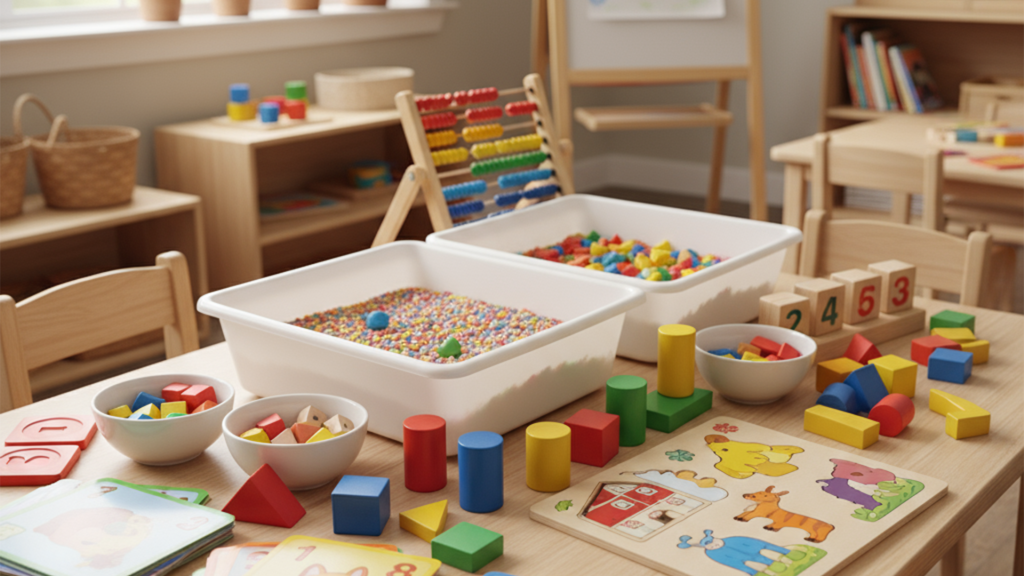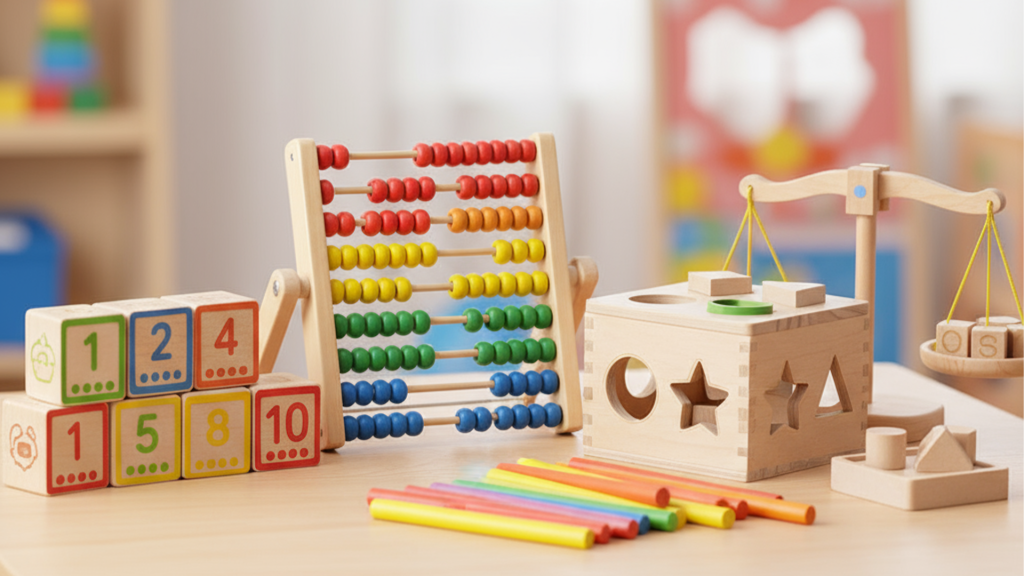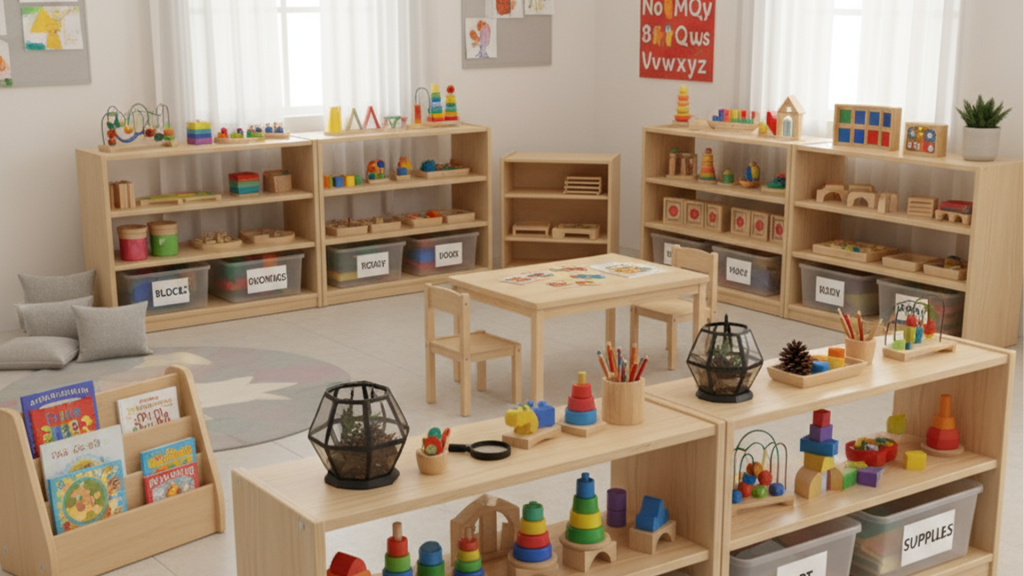Teaching aids for preschool have revolutionized how young children learn and develop essential skills in early childhood education. As educators and parents seek innovative ways to make learning engaging and effective, the right teaching aids become invaluable tools in creating enriching educational experiences. This comprehensive guide explores everything you need to know about selecting, implementing, and maximizing the benefits of teaching aids in preschool settings.
Table of Contents
- What Are Teaching Aids for Preschool?
- Why Teaching Aids Matter in Early Childhood Education
- Types of Teaching Aids for Preschool Classrooms
- Handmade Teaching Aids: The Personal Touch
- Modern Teaching Aid Technologies
- Teaching Aids in Maths for Young Learners
- Simple Teaching Aids That Make Big Impacts
- Wooden Learning and Teaching Aids Benefits
- How to Choose Quality Teaching Aids
- Implementation Strategies for Maximum Impact
1. What Are Teaching Aids for Preschool?
Teaching aids for preschool are specialized educational tools designed to make learning concepts more tangible, engaging, and understandable for children aged 2-6 years. These materials serve as bridges between abstract concepts and concrete understanding, helping young minds grasp foundational skills through multi-sensory experiences.
According to educational research, effective teaching aids transform traditional instruction into interactive learning experiences. They include everything from colorful flashcards and wooden puzzles to sensory bins and counting manipulatives. The primary goal of these tools is to engage children’s natural curiosity while supporting their cognitive, physical, and social-emotional development.

2. Why Teaching Aids Matter in Early Childhood Education
The importance of quality teaching aids in preschool education cannot be overstated. Research from early childhood education experts demonstrates that children learn best when they can see, touch, and interact with learning materials.
Key Benefits Include:
Enhanced Memory Retention: Visual and tactile learning experiences create stronger neural pathways, helping children remember concepts longer than traditional verbal instruction alone.
Multi-Sensory Learning: Teacher aids engage multiple senses simultaneously, accommodating different learning styles and ensuring every child can access the curriculum effectively.
Increased Engagement: Interactive materials capture and maintain young children’s attention, transforming potential distractions into focused learning opportunities.
Skill Development: From fine motor skills through manipulative toys to social skills via collaborative games, teaching aids support holistic child development.
Studies published by educational institutions worldwide confirm that classrooms equipped with diverse learning and teaching aids show significantly higher engagement rates and improved learning outcomes compared to traditional text-only approaches.
3. Types of Teaching Aids for Preschool Classrooms
Understanding the different categories of teaching aids for preschool helps educators make informed decisions when building their educational toolkit.
Visual Teaching Aids
Visual aids form the foundation of preschool education. These include:
- Colorful charts and posters
- Picture cards and flashcards
- Storybooks with illustrations
- Educational wall displays
- Shape and color recognition materials
Visual teach aids help children develop observation skills and create mental images that support learning retention.
Audio Teaching Aids
Audio resources engage children’s listening skills:
- Educational songs and rhymes
- Story recordings
- Musical instruments
- Sound-matching games
- Phonics audio materials
Tactile and Manipulative Teaching Aids
Hands-on materials that children can touch and manipulate:
- Wooden building blocks
- Counting beads and cubes
- Texture boards
- Play dough and modeling clay
- Threading and lacing toys

Audio-Visual Teaching Aids
Modern classrooms increasingly incorporate:
- Educational videos
- Interactive digital displays
- Animated storytelling presentations
- Documentary clips for science concepts
4. Handmade Teaching Aids: The Personal Touch
Handmade teaching aids bring unique value to preschool classrooms through their customization potential and personal touch. These teacher-created or artisan-crafted materials often reflect deep understanding of specific learning needs.
Advantages of Handmade Teaching Aids:
Customization: Teachers can create materials targeting specific learning gaps or cultural contexts relevant to their students.
Cost-Effectiveness: Many simple teaching aids can be crafted from recycled or affordable materials, making quality education more accessible.
Authenticity: Handcrafted items often feature unique characteristics that mass-produced items lack, creating more memorable learning experiences.
Sustainability: Handmade wooden toys and tools typically use natural, eco-friendly materials that are safer for children and better for the environment.
Popular handmade options include felt board stories, laminated card games, DIY sensory bottles, and custom-made wooden puzzles tailored to specific curriculum needs.
5. Modern Teaching Aid Technologies
While traditional materials remain valuable, modern teaching aid technologies offer exciting new possibilities for preschool education.
Digital Interactive Tools
Today’s preschools increasingly incorporate:
- Touch-screen educational tablets with age-appropriate apps
- Interactive whiteboards for group activities
- Educational robotics kits designed for young learners
- Augmented reality experiences that bring stories to life
Smart Integration Approach
The most effective approach combines traditional and modern teaching aids for preschool settings. For example, wooden counting blocks paired with a tablet app that tracks progress creates a balanced learning experience that honors hands-on learning while leveraging technology’s tracking capabilities.

6. Teaching Aids in Maths for Young Learners
Mathematical concepts can challenge young learners, making specialized teaching aids in maths essential for preschool classrooms.
Essential Math Teaching Aids:
Counting Manipulatives: Wooden beads, counting bears, and colorful cubes help children visualize quantities and understand one-to-one correspondence.
Number Recognition Tools: Large foam numbers, number puzzles, and tracing cards support numeral identification and formation.
Pattern Blocks: Geometric shapes in various colors teach pattern recognition, spatial relationships, and early geometry concepts.
Measurement Tools: Child-sized rulers, balance scales, and measuring cups introduce measurement concepts through practical application.
Math Games: Board games incorporating counting, dice for probability exploration, and card games teaching number relationships make mathematics enjoyable.
Research from mathematics education experts confirms that children who learn with concrete teaching aids in maths develop stronger number sense and more positive attitudes toward mathematics than those taught through abstract methods alone.
7. Simple Teaching Aids That Make Big Impacts
Effective simple teaching aids prove that sophisticated doesn’t always mean better in early childhood education.
High-Impact Simple Tools:
Flashcards: These versatile cards support vocabulary development, letter recognition, number learning, and concept matching.
Picture Books: Quality children’s literature serves as teaching aid for language development, cultural awareness, imagination, and emotional intelligence.
Building Blocks: Perhaps the most fundamental tool, blocks teach spatial relationships, problem-solving, creativity, and fine motor skills.
Everyday Objects: Household items like buttons for sorting, bottles for pouring practice, and cardboard boxes for creative play provide authentic learning experiences.
The beauty of simple teaching aids lies in their accessibility and versatility. A single set of colored blocks can teach colors, counting, patterns, building, balance, and cooperation—demonstrating how well-designed simple tools maximize educational value.

8. Wooden Learning and Teaching Aids Benefits
Learning and teaching aids crafted from wood offer distinct advantages that have made them educational favorites for generations.
Why Choose Wooden Teaching Aids:
Durability: High-quality wooden toys withstand years of classroom use, providing excellent long-term value compared to plastic alternatives that break easily.
Safety: Natural wood with non-toxic finishes provides safer play experiences without harmful chemicals found in some plastics.
Sensory Experience: Wood’s natural texture, weight, and warmth provide richer sensory feedback than synthetic materials, supporting sensory development.
Sustainability: Responsibly sourced wooden teaching aids for preschool represent environmentally conscious choices that teach children about sustainability.
Aesthetic Appeal: The natural beauty of wooden materials creates more calming, aesthetically pleasing learning environments compared to bright plastic toys.
Open-Ended Play: Wooden blocks, shapes, and figures encourage creative, open-ended play that develops imagination and problem-solving skills.
Educational research consistently shows that children engage more deeply and play longer with natural wooden toys compared to electronic or plastic alternatives. This extended engagement translates to deeper learning and skill development.
9. How to Choose Quality Teaching Aids
Selecting appropriate teaching aids requires careful consideration of multiple factors to ensure educational effectiveness and safety.
Selection Criteria for Educational Institutions:
Age Appropriateness: Materials must match children’s developmental stages. A tool perfect for 5-year-olds may frustrate 3-year-olds or bore 6-year-olds.
Safety Standards: Verify that all teacher aids meet relevant safety certifications, with no small parts for younger children, non-toxic materials, and sturdy construction.
Educational Value: Each tool should have clear learning objectives aligned with curriculum goals and developmental milestones.
Durability: Classroom materials face intensive use, requiring robust construction that withstands daily handling by multiple children.
Versatility: The best teaching aids for preschool serve multiple purposes, supporting various learning domains and adapting to different activities.
Cultural Relevance: Materials should reflect the diversity of students’ backgrounds and experiences, promoting inclusive education.
Maintenance Requirements: Consider cleaning ease and replacement part availability when selecting classroom materials.
Quality Indicators in Wooden Teaching Aids:
- Smooth, splinter-free surfaces
- Stable, non-toxic finishes
- Appropriate sizing for small hands
- Clear educational purpose
- Certification from recognized safety organizations
10. Implementation Strategies for Maximum Impact
Having quality teaching aids is only the first step; effective implementation determines their educational impact.
Best Practices for Using Teaching Aids:
Strategic Introduction: Introduce new teach aids gradually with clear demonstrations, allowing children time to explore and master each tool before adding more.
Intentional Placement: Organize materials logically by learning area, ensuring easy access while teaching organizational skills through consistent placement.
Rotation System: Regularly rotate materials to maintain novelty and interest while preventing overwhelming choices that can paralyze decision-making.
Integration with Curriculum: Connect teaching aids directly to learning objectives rather than using them as mere entertainment or time-fillers.
Encourage Exploration: Allow free exploration time where children discover materials’ possibilities independently, fostering creativity and problem-solving.
Model Appropriate Use: Demonstrate proper use and care of materials, teaching respect for educational tools and extending their lifespan.
Assessment and Adaptation: Observe how children interact with various teaching aids for preschool and adapt your selection based on engagement levels and learning outcomes.

Conclusion: Investing in Quality Teaching Aids for Preschool Success
The right teaching aids for preschool education create transformative learning experiences that shape children’s lifelong relationship with education. Whether choosing handmade teaching aids that reflect personal attention, modern teaching aid technologies that leverage innovation, or classic wooden learning and teaching aids that have proven their value across generations, the key is selecting materials that genuinely serve children’s developmental needs.
Quality teaching aids in maths, language, science, and all learning domains share common characteristics: they engage children’s natural curiosity, provide multi-sensory experiences, support multiple learning styles, and create joyful learning moments that build positive associations with education.
For educational institutions and distributors seeking reliable suppliers, partnering with manufacturers who understand these principles ensures access to teaching aids that deliver real educational value. Look for suppliers who prioritize safety, sustainability, educational design, and quality craftsmanship in their wooden toy production.
By thoughtfully selecting and implementing diverse teacher aids, educators create rich learning environments where every child can thrive, develop essential skills, and build strong foundations for future academic success.